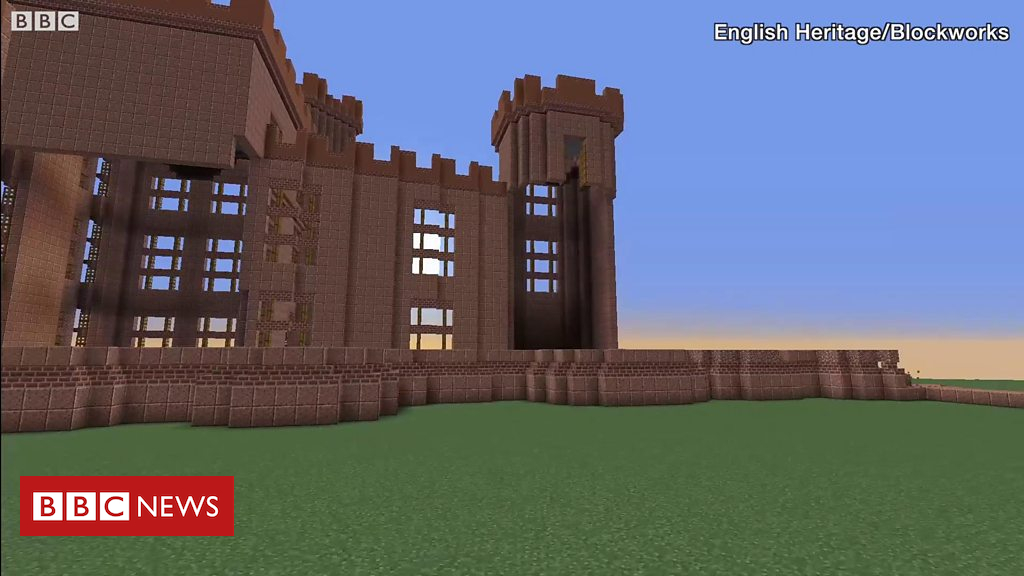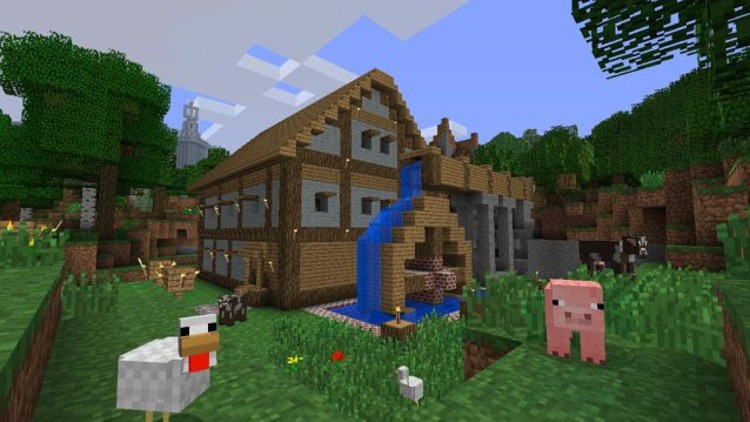
by Stone Marshall | Sep 7, 2018 | Awesome Book News, Free, Intro, Minecraft News, Minecraft questions, news, parent-news, State of Stone, Stone Marshall Book News, Stone Marshall Books, Stone Marshall Club, Stone Marshall Minecraft Adventures, Uncategorized |
Minecraft fans rejoice! The largest convention for a single video game is coming to Austin Sept. 15-16. Minefaire is expected to bring 15,000 people to the Austin Convention Center to celebrate the game.
What’s the big deal about Minecraft? If you have a kid in elementary school, you know.
See a video of the convention:
Here are some of the things you can expect to see at Minefaire:
Minecraft Virtual Reality Experience: Play Minecraft with virtual reality.
Learning Lab: Learn from Minecraft Education Global Mentors who use Minecraft in the classroom.
Build Battles and Challenges: Compete in live gaming arenas, code within the game and learn to solve problems in creative ways.
Minecraft Costume Contest: Dress up, dance and have fun on stage as your favorite Minecraft characters.
YouTube Meet & Greets: Meet Minecraft YouTube superstars who will share their favorite tips and tricks.
Nonstop, Live Stage Shows: Multiple stages will show different Minecraft experiences for different skill levels.
World’s Largest Official Minecraft Merchandise: Of course, there will be shopping.
Tickets are $49-$69.50, but kids younger than 2 are free. Find them at Minefaire.com.
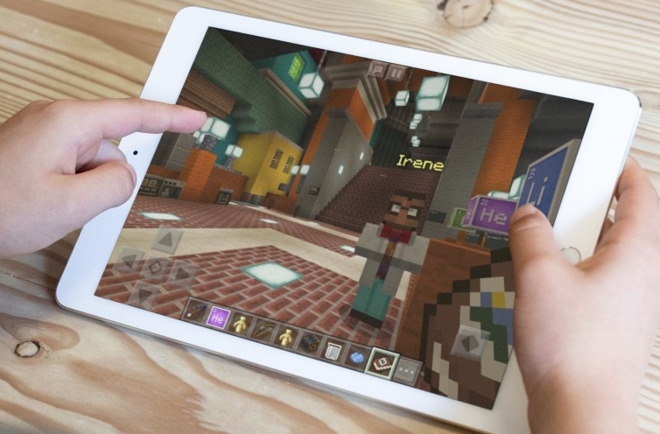
by Stone Marshall | Sep 6, 2018 | Awesome Book News, Free, Intro, Minecraft News, Minecraft questions, news, parent-news, State of Stone, Stone Marshall Book News, Stone Marshall Books, Stone Marshall Club, Stone Marshall Minecraft Adventures, Uncategorized |
Microsoft is bringing ‘Minecraft: Education Edition' to the iPad, allowing the version of the block-based construction game for schools to be used via the iPad, giving educators another way to use the game in the classroom.
The educational version of the game will be accessible on iPad from September, around the start of the new school year for most students. The app will be a free download from the App Store, and is designed for use with the Education Edition subscription sold from Microsoft.
Made to combine teaching with the popular building game, schools are able to license it through Microsoft 365 for Education or separate volume licenses, with free trials also available. The edition offers teachers a number of resources to incorporate Minecraft into their classes, including lesson plans, courses, technical support, and mentorship.
Subjects available range from the traditional STEM areas to other areas, including languages, art, and history, among other topics. As well as allowing students to build within the game, the Education Edition also adds in extra features to monitor progress and to allow teachers to lead lessons in the tool.
The move to iPad expands the educational version from Windows PCs and the Xbox, enabling it to be used by schools who have embraced Apple's tablets in lessons.
“Minecraft: Eduction Edition on iPad unlocks new and intuitive ways of collaborating and sharing and has revolutionized the way our students and teachers explore curriculum and projects,” said Kyriakos Koursaris, head of education technology for PaRK International School. “The features allow for deep and meaningful learning, and the values it promotes, from inclusivity to 21 century skills, empower everyone to use technology with extraordinary results.”
At the same time, Microsoft advises some features from the Education Edition will be arriving in the consumer version. Users of the Windows 10 and Xbox console versions of Minecraft will soon be able to use the Chemistry Resource Pack, which teaches lessons about elements and compounds, the periodic table, and allows the creation of new items including helium balloons, sparklers, latex, and underwater torches.
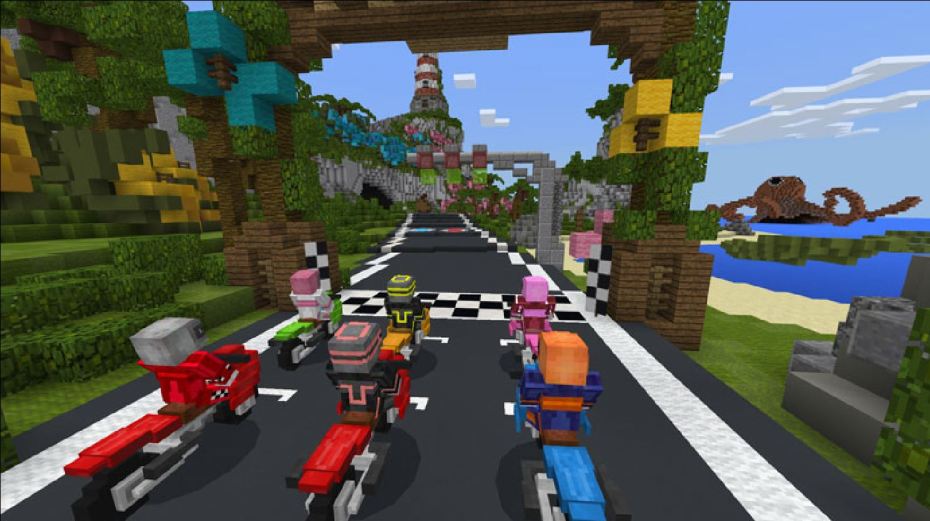
by Stone Marshall | Sep 6, 2018 | Awesome Book News, Free, Intro, Minecraft News, Minecraft questions, news, parent-news, State of Stone, Stone Marshall Book News, Stone Marshall Books, Stone Marshall Club, Stone Marshall Minecraft Adventures, Uncategorized |
A report claims that Microsoft is going to implement a new feature into Xbox One called Xbox Community Content that will bring mods and other creations into games at a system-wide level. Sound familiar? Well, it should. That’s similar to the Minecraft Marketplace, which had 295,850 downloads from players acquiring new content in May. And, as always, that content was a mix of worlds, skin packs, and more from the Minecraft Team and its third-party community partners.
But now that the Minecraft Marketplace has proven this can work, Microsoft seems to think it can bring it to other games on its platform. That’s something we’ve seen with Steam Workshop, but it could have an even bigger effect on consoles where modding a game outside of official channels is too difficult for most people.
I’ll be watching to see what Microsoft does with its Community Content platform. For now, it says it has nothing to announce on the subject. But we can still see what’s doing well on the Minecraft Marketplace.
Let’s do the charts.
Here are the top-10 most downloaded pieces of content from the Minecraft Marketplace in May 2018:
Click to view slideshow.
Here’s the top 10 downloads in list form:
City Life
Monsters of the Deep
Prison Escape
BrightStart Daycare
Wildlife: Savanna
Dinosaur Island
Abstraction: Cubes
The Bastion
Summer Mini Games Festival
Relics of the Sky
And here’s the top-grossing list for May 2018:
Click to view slideshow.
And the list:
City Life
Monsters of the Deep
Relics of the Sky
Wildlife: Savanna
Dinosaur Island
Super Racers!
HeroFair
Prison Escape
BrightStart Daycare
Primaveral Tropics
Next month, we’ll get the results from Minecraft Marketplace in June when the platform finally hit Nintendo’s Switch. It should be interesting to see if that causes an increase in downloads as a new platform gets access to community creations.
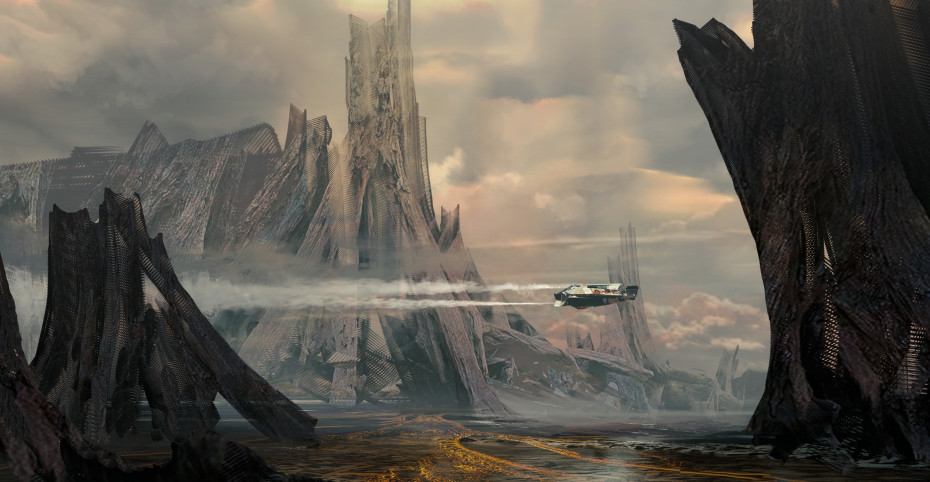
by Stone Marshall | Sep 5, 2018 | Awesome Book News, Free, Intro, Minecraft News, Minecraft questions, news, parent-news, State of Stone, Stone Marshall Book News, Stone Marshall Books, Stone Marshall Club, Stone Marshall Minecraft Adventures, Uncategorized |
Even if you can’t quite place the name, there’s a very good chance that you’ve played games Certain Affinity has worked on. Across the last 12 years, the Austin-based developer has been involved with everything from the Call of Duty series to, most recently, World of Tanks’ World Cup soccer mode. Certain Affinity has made a name for itself as a co-developer, but two years into its second decade, the studio is undergoing some significant changes.
“Historically we’ve been super below the radar because we always end up supporting other people, almost always with their big internal development studios, who really, just to be frank, prefer to be the ones in the limelight,” says president and founder Max Hoberman. “A lot of that’s changing because we’re in the process of transitioning to lead development, with original IP development also being a much larger portion of what we do as a company.”
Before setting up Certain Affinity, Hoberman had worked at Bungie for a decade, from right out of college. That was 1997. By the time Halo 2 came around, Hoberman had moved from the publishing side to launching and running Bungie.net, and then again to working on Halo full time, specifically the multiplayer.
“It’s funny, all the ways people interact with games on their consoles today, all the staple foundational ones, I had a hand in,” says Hoberman. “It was a long time ago. But I remember there was a time where I was actually a developer full time, for five or six years. In another life?”
Spreading out
Though he got to wear a lot of hats, the future at Bungie was Halo and Destiny-shaped, and Hoberman wanted more variety. This isn’t the only reason Certain Affinity leaned towards partnering with other developers on projects like Doom’s multiplayer, however. At Bungie, Hoberman had seen the difficulty of moving from developing a single game, Myth, to working on multiple projects.
“I made a decision from the get-go that if we are going to be a multi-project studio, we should be that from day one,” Hoberman explains. “That really was what guided me. I’d say the variety was a fringe benefit in that respect. But the real driving force was this: when I started Certain Affinity, the long term ambition was to absolutely create a powerhouse, triple-A, world class, independent developer who was able to work on multiple franchises at once. Sort of modeled after Blizzard in a lot of ways.”
That sort of lofty goal isn’t something you reach quickly. For the first decade, Certain Affinity immersed itself in other developers’ worlds and designed ancillary content, jumping between them while occasionally working on original projects.
“What differentiates us is we’re really, at the core, a co-developer who will jump in—we’ll take on a chunk of people’s games and we’ll actually co-develop as an extension of their internal team,” Hoberman says. “We’ll take an entire chunk of the game and do lead development on it, soup to nuts. There are companies that really specialize. There’s an engineering shop where specialized engineers in networking will bring your game online. There are UI and UX specialists. There are people who specialize in ports and platform transitions and these sorts of things. But we’re actually similar to the core teams that are developing these games.
“Take Doom, for instance. We took on all the multiplayer development for Doom. We actually came on board at a time when their internal team and single-player, core game mechanics, everything, were in utter chaos. They were going through a lot of transitions of their own. We stepped in and we took on the multiplayer. We ended up working hand-in-hand with the team over at id as they got their stuff sorted out and ultimately made a really amazing game. We were there lockstep with them, really in many ways, an extension of their team.”
For the next decade, however, Certain Affinity wants to invert that. Original development will make up the bulk of the studio’s work, and partnering up with other developers will supplement that.
At the moment, the studio is in the midst of that transition. It’s not completely made the shift, but it’s already changed significantly over the last two years. Around 60-70 percent of the team are working on a pair of games where Certain Affinity is the lead developer. Since neither game has been released yet, Hoberman’s not quite ready to call the transition complete. He wants to repeat the process and show that this is the direction the studio is dedicated to.
This change in priorities has given the studio a chance to work on its own FPS, after years of working on the likes of Call of Duty and Halo. When co-development made up the bulk of its work, Hoberman was hesitant about any original project being an FPS because the designers were already involved in FPS co-development work.
“I was afraid that would create some real strain on our co-development, which was paying the bills,” Hoberman recalls. “So I always tried to do things that were a little bit different, not FPS explicitly. And I think in hindsight that was actually a big mistake. At that 10-year mark, when we did some reflection and looked back and thought about moving forward, it became apparent that we were really hamstringing ourselves by not working on FPS. We have so much FPS experience at the studio, and so much action shooter experience in general, the bulk of it being first-person. It seemed like we were shooting ourselves in the foot, not trying to go big with something that played to our strengths. We made a huge shift and really decided we’re going to do something original in FPS.”
A new expedition
With Last Expedition, Certain Affinity gets to do that. It’s a co-op FPS with a survival layer. Four unfortunate souls land on an alien world that is far from pleased to have human visitors; it’s determined to kill them. So the survivors have to band together, building and fending off the excitable local wildlife. Hoberman’s not revealing more than the broad strokes, but clearly has very high hopes for it.
“It’s highly, highly novel and original. The production quality is really high because that’s what we do. It’s going really well. We actually playtest several times a week. You go in there and everyone’s yelling and screaming and having a good time, which is the best measure of success–when you enjoy your own work and want to be in there playtesting it.”
Alongside that, the studio is also developing an original Transformers title. It’s the largest project at Certain Affinity right now, and the studio’s biggest to date. It’s still very much under wraps, however, locked up in a vault protected by burly Autobots.
When it was working primarily as a co-developer, Certain Affinity didn’t have to concern itself with a game’s business model, but the transition has now made that a priority. Like a lot of studio bosses, Hoberman believes that games as a service is the right way to go.
“Most of the huge success stories these days are games that operate as a service,” he says. “They’re not one and done, or one and wait a few years for the sequel. They really are these living, breathing, continuously enhanced and developed experiences. We’re wholly embracing that shift. As we shift into lead development, we also have to shift into a model where we’re primarily developing games as a service.”
“It’s interesting because that’s not the bulk of what we’ve worked on,” he continues. “The Halos and Dooms and Call of Dutys. There’s multiple transitions that we’re going through as a company as we prepare for this. In that sense, both the Transformers game and Last Expedition have been designed from the ground up to be games as a service, to be games that become people’s hobbies that they play day in and day out, for months and years, and that we’re continuously improving and enhancing.”
It’s been a challenge to get to this point, says Hoberman, which isn’t even the end, but rather another beginning. But it’s worked out for the studio, which has turned a profit every year and has done so without laying anyone off. That, in particular, is something he’s extremely proud of; that, and the culture that has been built up over the last 12 years.
“For the game industry, we’ve built an incredibly unusual place to work,” he says. “We have an incredibly diverse workforce, way more diverse than the game industry at large. A much higher percentage of women developers, that’s one example. We have an incredibly inclusive culture. We have an incredibly mature, no-bullshit, no-ego culture. We have a staff that’s unbelievably talented. Everyone says that, but it’s a fact around here. It’s required to do the type of work we do. Really high end, jumping in and putting out fires and taking things over at the last minute, knocking them out of the park on time and on budget.”
Now Certain Affinity gets to do the same for its own games.
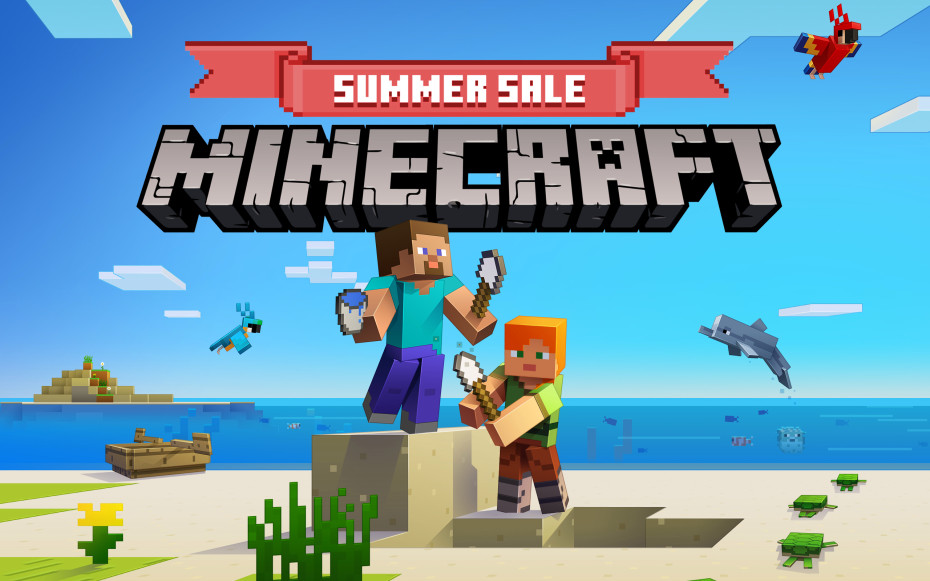
by Stone Marshall | Sep 5, 2018 | Awesome Book News, Free, Intro, Minecraft News, Minecraft questions, news, parent-news, State of Stone, Stone Marshall Book News, Stone Marshall Books, Stone Marshall Club, Stone Marshall Minecraft Adventures, Uncategorized |
The Minecraft Marketplace is about to get the followup on a serious 1-2 punch that could boost creator’s revenues and downloads through the end of July. The Minecraft Team at Microsoft launched the first Minecraft Summer Sale today. As part of this event, most of the content on the Marketplace is getting a steep discount.
While the Summer Sale may get fans downloading more content this month, last month it was the Nintendo Switch that helped fuel sales. The Minecraft Marketplace had 396,511 downloads in June, which is up from 285,816 in April. With the Marketplace hitting Switch for the first time beginning June 26, it’s likely that Nintendo’s platform contributed significantly to that total. You can see past results by tracking the Minecraft Marketplace sales charts here.
But now that Switch is integrated into the Minecraft platform, developers can focus on making their content and the Summer Sale. Some, like Gamemode One founder Sean Davidson, thinks discounts are exactly what some players are waiting for before they spend their money on Minecraft microtransactions.
“We hope and expect that the Minecraft Summer Sale will increase player accessibility to content and potentially drive increased traffic over the remainder of the year,” said Davidson. “Access to products at a discounted rate is a great way to give players and buyers on the fence a chance to see what the Marketplace has to offer.”
Developer Imagiverse has even spent the last few weeks preparing its Lapis Lagoon waterpark map for the sale (it’s already out). This update will roll out to everyone who owns it, and Imagiverse wants positive word-of-mouth to help it perform well in the sale.
“We focused on making sure Lapis Lagoon was going to give the player the best possible waterpark experience they could have in-game,” a spokesperson for Imagiverse explained in a note to GamesBeat. “Old and new players alike will appreciate the work we put into the map getting it ready for the sale.”
Let’s do the charts. Here are the 10 most downloaded pieces of content from the Minecraft Marketplace for June 2018:
Click to view slideshow.
Here it is in list form:
City Life
Mineville Highschool
Dinosaur Park
Planes
Dinosaur Island
Monsters of the Deep
Wildlife: Savanna
Mutant Battle Arena
Prison Escape
Lucky Block Escape
And here are the 10 highest-grossing pieces of content for June 2018:
Click to view slideshow.
List:
City Life
Dinosaur Park
Planes
Dinosaur Island
Monsters of the Deep
Wildlife: Savanna
Mutant Battle Arena
Mineville Highschool
Super Racers
Lucky Block Escape
Next month, we’ll get to see how the Summer Sale affects the charts. This is a big chance for Marketplace partners, and it could turn into one of the biggest months for the Minecraft store so far.
Correction, 12:14 p.m.: Sean Davidson’s name was misspelled as Sean David in the original article. We have corrected the error, and we apologize.
